The 22nd edition of the Golden Apricot International Film Festival took place in Yerevan, Armenia, from July 13 to 20, cementing its reputation as the South Caucasus’ premiere showcase of auteur and regional storytelling. Launched in 2004, with limited resources and no infrastructure even for Armenian subtitles (early screenings were accompanied by live voiceover translation), the festival has steadily grown in stature. This year’s edition, notably rich in Cannes-premiered titles, marked another step in Golden Apricot’s rise as a key venue for cinematic discovery in the post-Soviet space. This is a significant milestone, especially amid Moscow International Film Festival's decline, since the International Federation of Film Producers Associations (FIAPF) suspended its accreditation following Russia’s invasion of Ukraine.
The growing influence of Golden Apricot is reflected in the calibre of guests it has welcomed over the years, including Alexander Payne, Paul Schrader, Carlos Reygadas, Radu Jude, Claire Denis, and Sean Baker. While rooted in the Caucasus and focused on cinema from the region and its diasporas, the festival has also maintained close ties with India. In 2024, the regional jury was headed by 온라인카지노-American filmmaker Tarsem Singh, and in 2021, the Tamil indie Pebbles (Koozhangal) won the top prize, spotlighting India’s growing influence in global indie cinema. This bond is reciprocal: in 2024, the International Film Festival of Kerala (IFFK) paid tribute to 100 years of Armenian cinema with a special programme. In a film landscape marked by growing cross-cultural exchange, Golden Apricot continues to balance its regional identity with an international outlook.
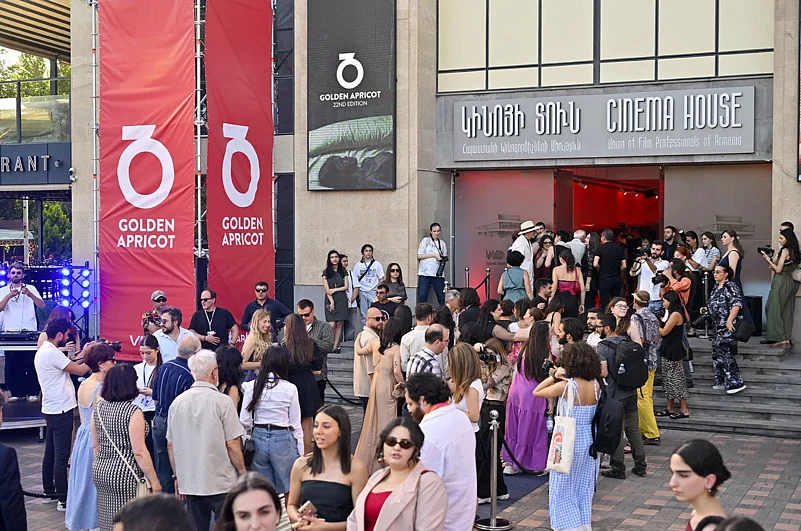
But what sets Golden Apricot apart, even as its global profile rises, is its unmistakably relaxed, intimate atmosphere. Unlike many major festivals where prestige builds walls, here there’s an unusual sense of openness. Acclaimed directors and jury members mingle freely with young cinephiles, bumming cigarettes and sharing smokes as their conversations spill from screening halls into Yerevan’s summer-lit streets and cafes, free of ceremony or hierarchy. This egalitarian spirit, while refreshing, does come with a dose of charming chaos: power cuts during screenings, vanishing Armenian subtitles, and sudden delays are not unheard of. Yet, it’s this unpredictability, this resistance to slick corporate polish that fuels the festival’s appeal. Real cinematic magic, after all, tends to appear not on the schedule, but despite it.
One moment at the opening ceremony captured this spirit perfectly: the head of the international competition jury, celebrated Mauritanian filmmaker Abderrahmane Sissako, was momentarily stopped at the entrance by an overzealous volunteer who asked, “Who are you?” Sissako, ever composed, replied, “It’s a long story—I don’t even know where to start.” Standing nearby, I gently whispered to the volunteer that he was, in fact, the head of the jury.
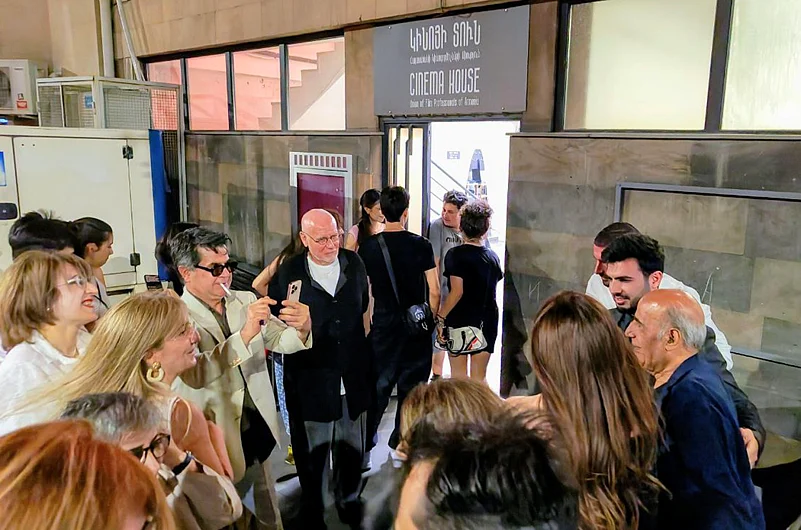
When the opening ceremony began, it was clear that the most poignant presence at it would be that of Iranian filmmaker Jafar Panahi. Just a year ago, he had made his first international appearance in over 15 years at the festival, following a travel ban imposed by Iranian authorities. This time, he returned in triumph, with his Cannes-winning film It Was Just an Accident opening the festival in an emotionally charged premiere. The evening’s most powerful moment came when Panahi invited legendary Iranian director Amir Naderi on stage to present him with the ‘Parajanov’s Thaler’ for lifetime achievement. “When I was a student, I once saw a man washing cinema windows to hang posters for his own film,” Panahi said. “I watched him for half an hour and realised, if you’re a filmmaker, you do everything yourself. That man was Amir Naderi.” Their embrace was more than ceremonial—a reunion across decades and borders. Naderi had left Iran in the 1980s after the Islamic Revolution, while Panahi spent years under house arrest and travel restrictions. For a brief moment in Yerevan, history, resistance and cinema came together in a deeply human gesture.
Later that evening, the festival’s special guests were still outside mingling with the crowd. Acclaimed festival director Marco Müller was exchanging cameras with Panahi and Naderi, snapping pictures with each other and with festivalgoers. It was a simple, open moment that reflected the democratic spirit of Golden Apricot: no velvet ropes, no VIP enclosures, just filmmakers and cinephiles sharing a summer night.
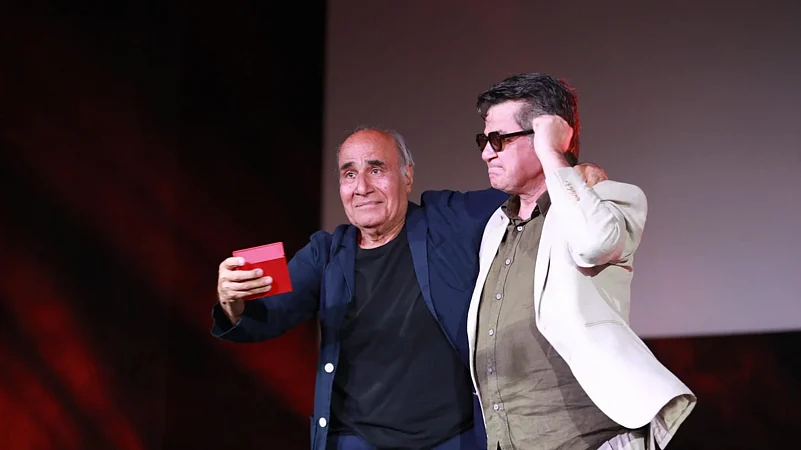
Throughout the week, Amir Naderi became a symbol of this spirit. He brought an infectious, youthful energy. From morning to night, he was everywhere: attending screenings, presenting films, talking at length with viewers, and shaking hands with anyone who approached. As head of the Regional Competition jury, he watched films with the public, since the festival doesn’t separate jury screenings. Even after full days in the cinema, he returned each evening to introduce and discuss his work in a compact three-film retrospective. It was a masterclass not just in cinema, but in generosity of presence.
Another tribute in the programme was to David Lynch, surrealist cinema’s iconic visionary, who passed away in January 2025. The festival screened Mulholland Drive (2001), featured his image on an official poster, and honoured him during the opening ceremony. At the closing reception, one room was turned into a playful take on the Twin Peaks Red Room, with heavy red drapes and a looping video of Lynch’s interview.
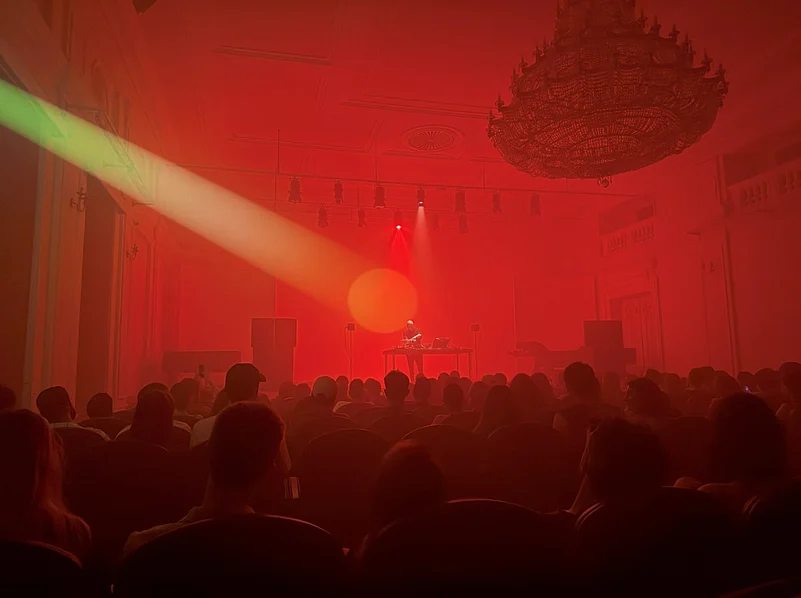
Despite the festival’s light-hearted atmosphere and its scenes of camaraderie and celebration, the films themselves painted a far darker picture of the world. Across both the international and regional programmes—from big-name festival selections to smaller local productions and short films—a shared sense of crisis reverberated. War, authoritarianism, and the trauma of history formed a common thread.
Fittingly, the festival’s top awards honoured films grappling with these urgent themes. In the international competition, the main prize was awarded to Fiume o Morte! by Croatian filmmaker Igor Bezinović. The film revisits the strange, almost forgotten episode of the 1920s occupation of the Croatian city of Rijeka by Italian poet and proto-fascist Gabriele D’Annunzio. Blending archival materials with re-enactments featuring non-professional actors, Bezinović crafts a wry, yet penetrating commentary on the seductions of authoritarian spectacle. Beneath its ironic tone lies a sharp reflection on the vulnerability of societies to eccentric, charismatic power figures—a historical parable with unnerving modern echoes.
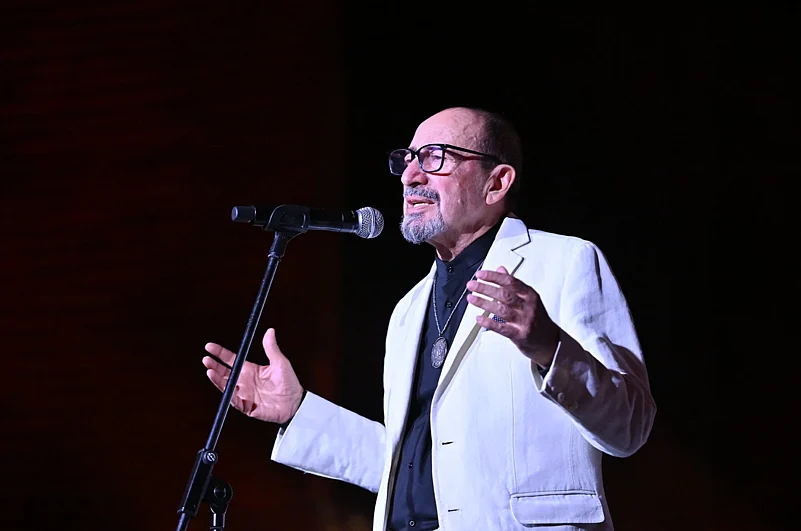
Meanwhile, in the regional competition, Put Your Soul in Your Hand and Walk by Sepideh Farsi was awarded the top prize for its unflinching portrayal of life in war-torn Gaza. Framed as a direct dialogue with Fatima, a young Gazan photographer, the film documents the quiet horror of war’s normalisation. Fatima speaks of ongoing genocide with composure, even a smile. And it is precisely this calmness that hits hardest, not despite the unfolding tragedy, but because of it, echoing the paralysing horror of watching something terrible happen and being unable to stop it.
A similar reckoning shaped Olga Zhurba’s Song of a Slow Burning Earth, which received a Special Mention from the international jury. Constructed as a fragmented portrait of post-invasion Ukraine, it avoids didacticism in favour of a more meditative and open-ended reflection, allowing the viewer to inhabit—rather than simply observe—the shifting emotional terrain of a country under siege.
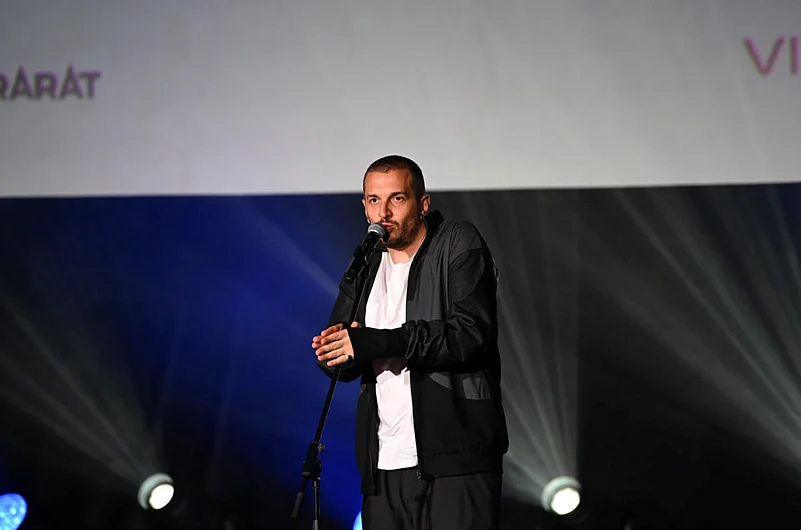
As the festival’s artistic director, Karen Avetisyan summarised the reasons behind this year's selection: “We don’t aim to mirror the current agenda—but in some ways, the filmmakers do that unconsciously. They try to keep abreast, and that’s where a connection is formed between creators and curators: through material that resonates deeply with both.”
Threaded through many of the films was not just a sense of crisis, but of aftermath—as if the world had already ended and we were now drifting through a scorched desert, mistaking it for familiar ground. Whether through realism or allegory, the selection suggested we’re living in a kind of post-apocalypse, masked by routine, denial, and the appearance of normalcy. This feeling carried into the out-of-competition programme, where two standout Cannes 2025 titles left a strong impression: Sirat by French director Olivier Laxe and Yes by Israeli provocateur Nadav Lapid. Though radically different—one a mystical, ascetic journey with rave pilgrims in the Moroccan desert, the other a garish satire on Israel’s post-October 7 moral paralysis—both circled the same anxiety: how to live amid collapse of societal structures.
In Sirat—a techno-symphonic meditation on escape and ecstasy—Laxe offers an existential parable about the thin line between transcendence and ruin. The film’s hypnotic pull was heightened by a live immersive set from composer Kanding Ray after the screening, turning the cinema into something between a wake, a rave, and a prayer. Lapid’s Yes, by contrast, bombards the viewer with kitsch visuals and a relentless stream of familiar pop hits, layering absurdity over a scathing critique of ideological paralysis. Despite their stark differences in tone and form, both films suggest the same uncomfortable truth: the party is over, and there are limits to how far escapism can take us.
No edition of Golden Apricot feels complete without confronting the Armenian reality, where the wounds of war aren’t distant metaphors but a present, lived experience. The long-running conflict over Nagorno-Karabakh casts a heavy shadow over local programming. Nearly half of the short films in the Armenian section explored themes of displacement, loss, memory, and trauma, reflecting, in a deeply personal way, the same atmosphere of crisis that shaped the global selection.
Perhaps the most striking Armenian entry this year was After Dreaming by Christine Haroutounian. Subtle, poetic, and quietly devastating, it explores the lingering presence of war: not through violence, but through memory, landscape, and emotion. Drawing on the visual language of Carlos Reygadas, who also produced the film, Haroutounian leads the viewer on a dreamlike, interior journey. The result is a hypnotic elegy that evokes a collective state of suspension, where the past quietly looms over every moment of the present.
And yet, despite all the reckoning and despair, the festival’s final and perhaps most resonant moment offered a fragile sense of hope. The last screening, the next day after the official closing ceremony, was Resurrection, the latest film by Chinese auteur Bi Gan. Known for his enigmatic and visually daring work, he delivered what was arguably the festival’s most accomplished film. More refined and ambitious than his earlier efforts, Resurrection resists easy interpretation, unfolding as a sensorial journey through dreams, memories, and fractured realities. It’s less a narrative than an experience, serving as a quiet reminder that even during an unfolding catastrophe, cinema still keeps the candle burning for meaning and imagination. In a festival shaped by war, loss, and disillusionment, Bi Gan’s film lingered like its final flicker, suggesting that as long as stories survive, the flame of dreaming endures.

















